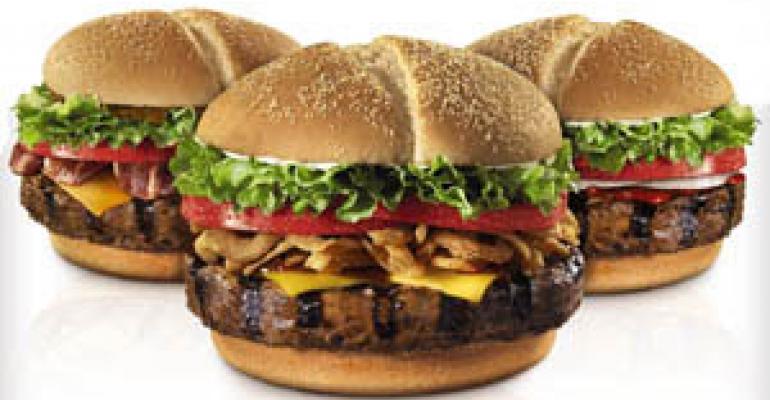As restaurants climb out of the latest bruising recession, they are working to wean customers off the deep discounts and margin-eroding deals that have become common, according to a new report from The NPD Group.
Expect to see more breakfast items and outlets, more premium products and more snack items on menus, said Bonnie Riggs, NPD’s restaurant analyst and author of the just-released study, “Light at the End of the Tunnel … What Can We Expect.”
“Now that we are seeing a little bit of light at the end of the tunnel, [operators] are starting to introduce new products, new types of deals and things to divert consumers’ attention or wean them off from the steep discounts,” Riggs said. “It would be a kiss of death to abruptly stop that kind of initiative, especially in this environment.”
For the past two years, “buy some/get some” offers, discounted prices, coupons and daily specials had largely supported deal traffic, NPD said.
“The decline in visits would have been worse had it not been for dealing,” said Riggs, who added that deals now represent about a quarter of restaurant traffic.
Now, NPD found that consumers who claimed to have cut back on restaurant visits indicate that price discounts and other deals are less important motivators than last year. Also, in seven of the last nine weeks, same-store sales at the nation’s largest restaurant chains have held steady or turned positive, Riggs said, citing NPD’s Sales Track Weekly survey of 45 chains. “We hadn’t seen anything like that in the last 11 months,” she said. “Everything had been in the negative and pretty ugly.”
As indicators turn positive, restaurateurs are trying to build awareness and traffic. “You want to get them into your restaurant and hopefully you can up-sell,” Riggs said. “But you have to have something to generate buzz to get them into you restaurants first.”
Buzz is coming in the breakfast daypart, with new products being introduced every month and operators previously not in the space, such as Subway, diving into the daypart.
“Part of the reason is that breakfast, prior to the high unemployment, was a growth market, one of the strongest-performing dayparts in the restaurant industry,” said Riggs.
Operators are also introducing high-ticket premium products “to divert customers away from steep discounts,” said Riggs, citing such products as McDonald’s Premium Angus Burger, Burger King’s Steakhouse XT burger and Fire-Grilled Ribs, Wendy’s bacon and blue cheese burger, Hardee’s Angus-portobello Thick Burger, Jack in the Box’s grilled sandwiches, Whataburger’s grilled chicken melts, Starbucks’ paninis and KFC’s Double Down bunless chicken sandwich.
“[Consumers] like to try new things, and they hope by offering up those more premium products that they will get consumers’ minds off the dollar-menu items and those kinds of things,” Riggs said.
A third area being tackled to wean patrons off discounts is snacks.
“You’ll probably start seeing a lot more activity in the area of snacks,” Riggs said. “The snack daypart held up better than the morning meal in this recession. Consumers’ definition of a snack has changed. It’s no longer a bag of chips or a salty snack or an ice cream cone. What consumers report now as a snack is a sandwich or specialty drink.
Contact Ron Ruggless at [email protected].




